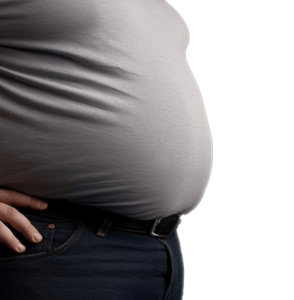The Body Roundness Index (BRI) is a measurement method developed to evaluate the distribution of body fat more accurately. The traditionally used Body Mass Index (BMI) classifies body weight in relation to height but does not provide enough information about the distribution of body fat. Therefore, alternative methods like BRI have been developed to assess health risks more accurately. BRI is particularly useful in reflecting the health impact of fat accumulated in the abdominal region. By using waist circumference and height measurements, BRI aims to evaluate an individual’s body fat distribution more precisely. Since abdominal fat accumulation is an important risk factor for health issues such as diabetes, heart disease, and hypertension, BRI plays a critical role in identifying these risks.
Waist Circumference (cm): Measured at the midpoint between the lowest rib and the top of the hip bone. This measurement is crucial for accurately assessing the distribution of fat in the abdominal region.
Height (cm): The individual’s height, measured from the top of the head to the bottom of the feet while standing.
The value obtained from the BRI calculation is classified according to specific reference ranges to evaluate an individual’s health risk.
How IS BRI Calculated?
To calculate BRI, waist circumference and height measurements are used. These measurements are then applied to the following formula to calculate BRI:

In thıs formula:
Classıfıcatıon of BRI Values and Health Rısk Assessment
Based on the BRI value, individuals are classified in terms of health risks. Generally, BRI values are classified as follows:
Low Risk: Individuals in this range have minimal fat accumulation in the abdominal region and generally carry a lower health risk. However, maintaining healthy lifestyle habits is still important.
Moderate Risk: Individuals in this group have a moderate level of fat accumulation in the abdominal region. This condition may lead to an increased risk of health issues over time, so making lifestyle changes can be beneficial.
High Risk:Those in the high-risk category should be monitored closely for serious health problems. Excessive fat accumulation in the abdominal region can increase the risk of metabolic diseases, particularly heart diseases, diabetes, and hypertension. In such cases, a comprehensive evaluation and appropriate intervention by health professionals are recommended.
Since BRI is based on waist circumference and height measurements, it is crucial that these measurements are taken and evaluated accurately. Furthermore, these ranges and health risks can vary depending on factors such as age, gender, and genetics. Therefore, other health indicators should also be considered along with BRI.
BRI Reference Values and Classıfıcatıon
As BRI is not as widely used as the Body Mass Index (BMI) yet, different reference values have been suggested for various populations. Based on general research, the commonly accepted reference ranges for BRI are as follows:
For Men:
Low Risk: 0.83 and below
Moderate Risk: 0.84 – 0.91
High Risk: 0.92 and above
For Women:
Low Risk: 0.72 and below
Moderate Risk: 0.73 – 0.81
High Risk: 0.82 and above
Conclusıon
The Body Roundness Index is an important measurement method that evaluates the distribution of body fat, particularly abdominal fat, more accurately. By using waist circumference and height measurements, it allows for a more comprehensive assessment of an individual’s health risks. For a healthy life, it is important to pay attention not only to the amount of body fat but also to how it is distributed. In this sense, BRI can guide individuals in accurately identifying their health risks and achieving their healthy living goals.


